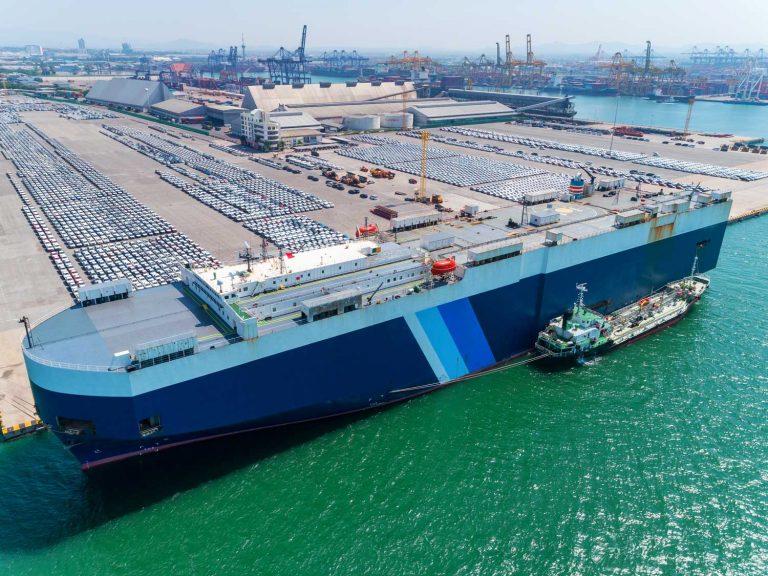
Date:
Coronavirus hits car carrier fleet
With consumer and commercial automotive demand falling, in the wake of the coronavirus pandemic, specialised RORO car carriers are coming to terms with a pronounced downturn, with as many as one in three vessels projected to be idled in the coming months.
Working in some of the most demanding sectors, Metro has highly advanced technology and skills for the handling and transportation of hazardous, fragile, large and valuable cargoes, including all manner of personal, industrial and commercial vehicles.
The backbone of global automotive transport is the fleet large type of RORO called a pure car carrier (PCC) or pure car/truck carrier (PCTC), with the largest capable of carrying over 8,000 cars.
“Metro has been specialising with automotive manufacturers for decades, optimising complex inbound and outbound supply chain operations, on all modes of transport”
With consumer and commercial demand falling, in the wake of the coronavirus pandemic, these specialised carriers are coming to terms with a pronounced downturn, with as many as one in three car carriers projected to be idled in the coming months.
The idle car carrier fleet is approaching 200, representing over a fifth of the fleet and is projected to rise over the next couple months, as demand is unlikely to recover in the short term, to between 220-250 vessel approaching 30% to 35% of the global fleet.
Asian markets were affected first, with Chinese light vehicle sales down 80% year-on-year in February, although it should be noted that in April both Chinese and Korean sales showed signs of normalising.
Volvo reported that sales in China were 20% higher last month, than last year
North American and European sales have fallen by 50% and 74% year-on-year respectively in April, with more bad news expected.
Analysts predict a fall on a similar scale to 2009, when seaborne car trade fell 33%. The signage that car carriers will be the second hardest hit cargo shipping segment after containers.
Data issued by tracking site MarineTraffic shows that year-on-year the amount of empty car carriers has leapt 50% and Nippon Yusen Kaisha (NYK), one of the big Japanese car carriers is expecting a decline of about 50% in the first quarter.
Based on an analysis of global vehicle sales and production trends, cargo volumes are currently expected to gradually recover from the second quarter, but the level of recovery will likely vary by country and region.
The moves toward rebalancing capacity and demand are well underway, with leading PCTC operator Wallenius Wilhelmsen indicating that it could remove around 10 to 15 vessels and a number of other operators have cut sailings.
New vehicle sales in the US are slowly recovering this month, but they are still expected to be significantly down from a year ago.
Ironically, the coronavirus may offer car-makers a slither of hope, if the public decide that self-isolation in a car is safer than public transport.
China has seen a sharp rise in individual car use as commuters shun public transport, with congestion in major Chinese cities back to 90 per cent of pre-lockdown levels, while subway use lingered at just 50%.
Propelled in part by health concerns, Volvo reported that sales in China were 20% higher than in 2019, while the whole market in April was 4.4% higher than a year earlier.
In the UK, interest in car buying has surged since Boris Johnson announced the easing in lockdown rules.
